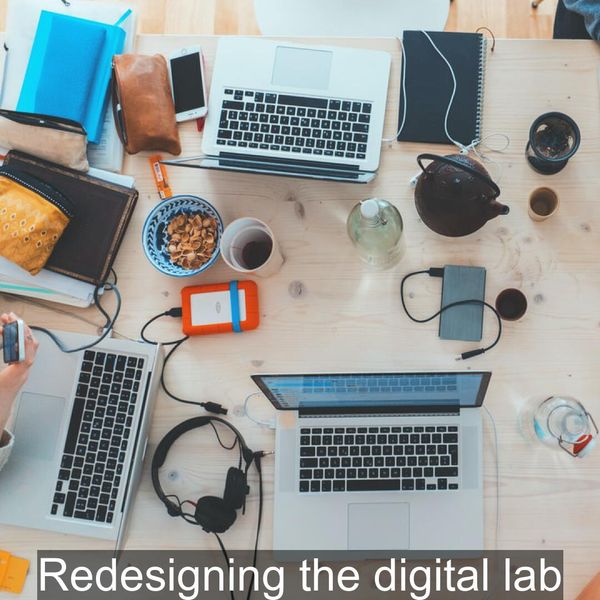At the beginning of the pandemic, labs shuttered. Everything quickly moved online. Researchers experimented with virtual lab meetings, digital journal clubs, zoom happy hours, and online conferences. Despite some successes, the community quickly realized these experiments largely failed. While some choose to ignore these results, others are designing new experiments to run a successful lab in this digital century.
Skeuomorphism is an idea used in graphical user interface (GUI) design to describe when an interface object mimics a real-world counterpart. Some well-known examples are the ubiquitous folder-file structure to organize a computer's contents to mimic a filing cabinet or the recycle/trash bin icon to mimic discarding files. However, skeuomorphic is now more broadly used to describe designing software or applications that mimic real-world experiences. For example, Zoom recently rolled out a feature that allows a meeting host to place their meeting participants in virtual rows, mimicking a classroom or conference theater. Skeuomorphism makes objects familiar by designing concepts users recognize.
However, skeuomorphism is inherently limiting. Digital spaces allow for new interactions, new designs, and new concepts untethered to the limitations of physical reality. The first iteration of something new often mimics the real-world (mobile phones first needed a pen or keyboard to input information). The next iteration discards the old and designs new, digital-native ways to interact (like the voice dictation I'm using to write some of this article). Skeuomorphic thinking is stuck in the real world, but the future is not.
The attempts to re-create real-life lab experiences of meetings, journal clubs, happy hours, and conferences in a virtual setting are skeuomorphic. But like from every failed experiment, the research community has learned: virtual lab meetings allow more lab members to contribute questions and ideas via chat; the paper's author can give journal club from across the globe; lab bonding and culture can occur outside of the restaurant or bar; conferences delivered online are more inclusive for scientists who have been historically excluded for personal or financial reasons.
Digital is here to stay — in science and beyond. We need to throw out our skeuomorphic thinking as we redesign our labs and lives around this new digital reality. Real-life has constraints. Digital life has different ones. We can take the best of what works, drop what isn't working, and radically re-imagine our new digital future.
